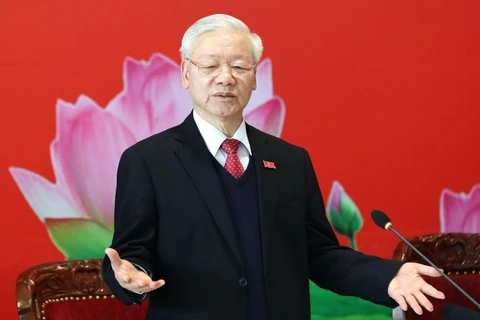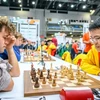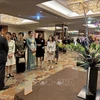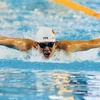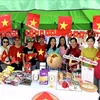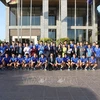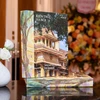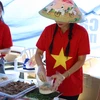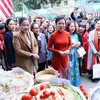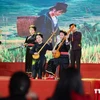 In the morning of August 19, 1945, people in Hanoi and nearby provinces flock to the square in front of the Hanoi Opera House to attend a meeting held in the general uprising to seize power (File photo: VNA)
In the morning of August 19, 1945, people in Hanoi and nearby provinces flock to the square in front of the Hanoi Opera House to attend a meeting held in the general uprising to seize power (File photo: VNA) Hanoi (VNA) – During the resistance wars, many famous revolutionary songs were composed very quickly so as to convey people’s boiling emotions in a timely manner.
While “Muoi chin thang Tam” (The 19th of August) was composed in just one morning, “Qua mien Tay Bac” (Marching to the Northwest) and “Chien thang Dien Bien” (Dien Bien Victory) were written in a night, and “Tien buoc duoi quan ky” (Marching under the Army Flag) was completed in just two days.
Thanks to their long-nurtured strong emotions and ideas nurtured, composers living in wartime such as composers Xuan Oanh, Doan Nho, Nguyen Thanh, and Do Nhuan created those immortal melodies.
Nowadays and definitely in the future as well, whenever the song “Muoi chin thang Tam” (The 19th of August) by Xuan Oanh is aired on the anniversary of the August Revolution, listeners will once again be moved and reminisce about the heroic days of the entire nation. It was composed as the young composer joined the sea of people from different directions to flock to the square in front of the Hanoi Opera House and take part in the general uprising to seize power on August 19, 1945.
Composer Doan Nho, a military colonel, said the song’s harmony inspires strong emotions, giving him vivid feelings of the atmosphere of the crowd and the people’s determination on that August 19.
That autumn, Nho was just a 12-year-old boy. Though he was not present at the square at that time and only came to know the event via a story told by his elder brother, who was also among the crowd, he still felt deeply touched listening to this song and then taught it to his friends and small children.
Nho himself is also famous for many songs, including “Tien buoc duoi quan ky” (Marching under the Army Flag), which was created in just a couple of days in 1958 and has become a popular song in national ceremonies and military parades.
At that time, four years after the victory of the Dien Bien Phu Campaign, he was tasked with writing a song for the art troupe of the General Department of Politics to serve people in the Dien Bien farm.
Standing on Hill A1 with two graves of unidentified martyrs and the wreck of a tank nearby, Nho penned “Tien buoc duoi Quan Ky”, which was inspired by his profound emotions and grief over his comrades who had laid down their lives in the Dien Bien Phu Campaign.
For his part, Nguyen Thanh created “Qua mien Tay Bac” (Marching to the Northwest) right in the night following a march to the northwestern region to prepare for the Dien Bien Phu Campaign.
He once said that this song was nurtured by his love for the region and inspired by Poet Quang Dung, who was renowned for the poem “Tay Tien” (Marching Westwards).
Spending a sleepless night on May 7, 1954, when the Dien Bien Phu Campaign came to a success, Do Nhuan composed “Chien thang Dien Bien” (Dien Bien Victory). Months before that, he imagined the day of liberation of the northwestern region. Thanks to that, he succeeded in depicting the French troops’ surrender and the Vietnamese military and northwestern people cheering emotionally via the song’s music and lyrics.
Creating songs right amid that enthusiastic atmosphere was an important factor, and it was the strong emotions that urged composers like him to write immediately, Nho said.
He expressed his hope that younger generations can uphold the pride in the Fatherland’s history via these songs./.

